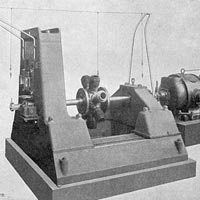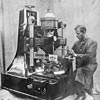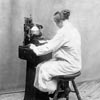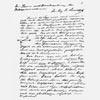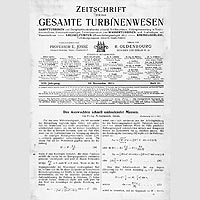1907 to 1927 – From roll-balancing facilities to balancing machines
A technology still in its infancy
At the start of industrialisation it would take three to four weeks of tiring manual work in order to balance rotors reasonably well. Nevertheless, at greater speeds there was the risk of tank explosions, flywheel breakages and damages to the bearings on account of the vibrations caused by the faulty balancing goods.
Schenck climbs aboard
The Canadian, H. Martinson, was granted in 1870 what was probably the first patent for a balancing machine. In 1907 Dr. Ing. Franz Lawaczeck came up with a workable solution in his paper "Zur Theorie und Konstruktion der Balanziermaschine" (Theory and design of a balancing machine). In 1908, Carl Schenck, who had also started looking into the subject of "Roll-off" balancing at that time, concluded a licence agreement with Lawaczeck. The "Lawaczeck principle" remained valid right into the forties: It consisted of a pendulum-mounted fixed bearing on the one side of the rotor and a radially flexible bearing on the other side. After initial correction in one plane, the rotor was reinstalled.
